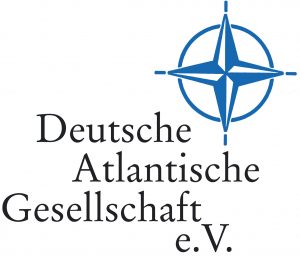Afghanistan





On December 10, 2015, AGI hosted a day-long conference of over 100 attendees entitled Afghanistan: Over a Decade of U.S.-German Collaboration and Challenge together with the Embassy of the Federal Republic of Germany in Washington, the United States Institute of Peace, Deutsche Gesellschaft für Auswärtige Politik e.V., and Deutsche Atlantische Gesellschaft e.V. Fifteen years on in Afghanistan, Washington and Berlin continue their close cooperation with a significant change—from the third largest force contributor, Germany assumed deputy command the beginning of 2015 for the follow-on Resolute Support mission to train, advise, and assist the Afghans. The conference examined not only what lessons have been learned and how far the collaborative efforts have come, but also how far there is to go and how the alliance can operationalize and meet common goals.
Panel I: “Lessons Learned – A Transatlantic Debate”
The first panel examined the NATO-led International Security Assistance Force (ISAF), a major project of transatlantic cooperation both in military and political terms in which the U.S.-German relationship has been nested. The overall allied efforts experienced successes as well as shortfalls, notably in its difficulty in locating and moving against Osama Bin Laden. Different priorities and different levels of resources from nearly fifty allies—some NATO members/others not—had a huge impact on Afghanistan’s stability and development. While nation building was not a priority for all nations, it was an important factor for Germany in this first involvement in a conflict outside Europe in the post-WWII era. Termed an “accidental war” by one participant due to the events of 9/11 in the U.S., there was general agreement that both countries’ initial efforts were inadequate given the limited resources that were committed to development projects and military stabilization of the country, particularly with the U.S. shift in resources to Iraq in 2003.
Although a lack of resources early on inhibited the reconstruction effort, there was steady progress as the coalition adjusted its efforts in areas such as social policy, health, literacy, and education that has led to an increase in the overall standard of living. There has also been recognition that a troop presence is necessary to stabilize these advances.
The panel turned to discussion of how to progress for the future and noted that development missions do not advance in insecure environments. The lack of peace in Afghanistan can be in part attributed to not learning from the lessons of history. USAID reports, which chronicled mistakes in Afghanistan from 1954 to 1979, had many similarities to the post-2001 Afghanistan intervention. Given different strategies and priorities between the allied nations, it is important to recognize that there is a need to adopt a coordinated approach for the future to work better as a coalition in Afghanistan. The U.S. decision to maintain a presence after 2014 was critical and the additional extension of its commitment to Afghanistan after 2016 has brought much needed optimism. The German commitment has increased its follow-on force accordingly.
But there have also been transatlantic frictions and divisions over the way forward in Afghanistan. In the first few months of 2015, a high rate of civilian casualties plagued the country, and consequently it has been very difficult for the Afghan forces to maintain even the status quo. The struggle for Kunduz in what was the earlier German ISAF regional command has been particularly difficult in this respect. A secure environment is requisite if there is to be a political process initiated in the near future.
Panel II: “Economic and Security Lessons from the Transition”
Panelists dated the phase of transition in Afghanistan at the NATO summit in Lisbon in 2010 where heads of state agreed to hand over more authority to the Afghan government. Though it may have appeared a reduction of support from the international community, it was not a reduction, but rather a change in type of support from combat forces to forces focused on training. In economic terms, Afghanistan continues to be highly dependent on foreign financial aid. This second panel questioned if a true transition occurred, where did Afghanistan get more authority, how did it happen, and was it successful?
In the time of transition, it has been positive that both Germany and the United States have agreed to continued commitment to Afghanistan. From the Afghan government perspective, there is also commitment and willingness eventually to execute a complete takeover. At the same time President Ashraf Ghani has voiced concerns for the future and stressed the need for support and partnership from the international community. Despite uncertainty, Afghan forces have made remarkable progress, according to several participants, although recent Kunduz events have been disturbing. Economically there remain substantial challenges even with the advances in reconstruction and development efforts in areas such as education. The withdrawal of troops has caused the loss of jobs and purchasing power. One of the poorest countries in the world according to the World Bank, Afghanistan has often experienced aid coming in that was not well administered and led to massive corruption. A lack of focus on state building plus a quick fix mentality further facilitated corruption. These negative attributes must be appreciated in order to move forward and learn from the lessons of the past. On the positive, there has been some significant progress in shutting down large scale corruption. The Afghan mentality of optimism and resilience, according to panelists, has resulted in small steps toward self-reliance that should continue to be supported.
Coordination is a challenge in areas requiring civil cooperation; the military cannot solve this conflict alone. Civil coordination, which should have started earlier in the deployment, has produced an Afghan population increasingly discontented with politics and governance, an issue to which the ISAF coalition contributed through its support for the wrong, and often corrupt, officials. Furthermore, good governance and anti-corruption must be priorities in order to achieve long-term prosperity. The lack of private investment shows that the legal process is still lagging and there is a lack of government stimulation to encourage locals to invest in their own country. The focus on economic activities and structures will be important factors moving forward.
The original task of the International Security Force (ISAF) was to enable the transitional government of Afghanistan under President Hamid Karzai to provide security across the country, buy time to create a new Afghan force, and make sure that Afghanistan would not become a safe haven for terrorism. From the beginning, ISAF was set up for failure with limited troops in support. Even though it became clear that the number of troops was not sufficient, the problem from the beginning was that ISAF forces were going into areas where there was very little government presence. As a result, it became increasingly involved in combat operations. When an American general assumed command of ISAF, there was a change in approach as the army became expected to engage in counter-insurgency. The main goal was not to kill as many Taliban as possible, but rather to reintegrate Taliban into society by providing incentives. The surge and then drawdown of troops in 2010 diminished the effectiveness of the surge. Statistically, the surge appears a failure, but they do not reveal that ISAF went into areas under heavy Taliban control. The surge hindered the Taliban from becoming stronger, but the high numbers of casualties cannot be sustained moving forward and more support from other actors is needed in the future.
One of the downfalls was the overly ambitious pace at which money was spent. Referencing the earlier USAID report that examined mistakes in Afghanistan from 1954-1979, the conclusion was that aid can be destabilizing when high levels of aid correlate with high expectations. Security and political objectives tended to trump development initiatives. The economy was filled with uncertainty leading up to the transition. There were different perspectives in the U.S. versus other coalition members in Afghanistan. The introduction of a market economy in Afghanistan was just one example of the international community overlooking, misunderstanding, or ignoring problems in the Afghan economy. Although there has been optimism from the wealth created in the last decade in Afghanistan, it was extremely concentrated in distinct sectors of society rather than the broader public. In the transition post-2014 phase, the Afghan government has shifted to a stewardship instead of implementation and a leadership role in Afghan economic development, which has then fallen short due to poor communication with the public and stakeholders of economic growth and projects. In moving forward, these economic and security shortfalls need to be internalized not only for the future of Afghanistan but for the next Afghanistan, whether it is Syria, Iraq, or elsewhere.
Panel III: “Decade of Transformation”
What are the challenges facing the U.S. and Germany in Afghanistan during Resolute Support and the future? The initial phases of the war fell short both in adequate economic assistance and in preparing the military and police for a direct handover. For Afghanistan, 2014 was not the only year of transition—unfortunately 2015 and 2016 are as well. There has been a significant improvement, especially with the London conference, which was seen as a positive step, though the implementation process will take time. Recently at a senior official meeting in Kabul, there was a debate over whether adherence to the Tokyo Mutual Accountability Framework (TMAF) or implementation of the Self-Reliance through Mutual Accountability Framework (SMAF) would provide a new, more realistic agenda. TMAF is the primary development agreement between donors and the Afghan government with SMAF a combination of the TMAF with the addition of a reform agenda presented by the Afghan government at the London conference. SMAF resonated more with the majority of European donors.
Additionally, a common understanding that the current government had inherited an ineffective and corrupt state system lifted the pressure off the new leadership. Structural problems and inability to recognize the problems realistically are partly why 2015 and 2016 should also be considered transition years. For example, the state budget deficit is in large part structural and yet there is a push for the Afghan government to reduce the budget, a difficult expectation. Another issue is the sustainability of many past and current assistance projects. Eighteen of the twenty-two Afghan ministries have been at least partially manned by contractors who worked on a short contract term basis in the past; as these contractors depart, changes need to be made to uphold that level of experience they will take with them.
There are a number of other lessons learned for the future of Afghanistan. The commitment to the rebuilding of Afghanistan must be as multilateral as possible, starting with NATO allies, but also including members of the broader coalition involved in Afghanistan. Given the structural issues plaguing the country, there needs to be a comprehensive effort to address the internal challenges that threaten to destroy the culture of the country—this includes the process of reconciliation among the many domestic and other stakeholders. One proposal for a more constructive step in the right direction would have been for an initial commitment from the United States to prolonged troop assistance in the post-2014 phase, aiding the elected president to make his own assessment of the situation without constraints.
From the perspective of some panelists, even though the current Afghan government is more reform-oriented than its predecessor, it is still weaker at this point than the previous government. To strengthen the government, from the NATO viewpoint, there need to be realistic goals and not over-ambitious expectations. In order to facilitate the short and longer term future of Afghanistan to achieve prosperity, investments in younger generations are crucial. Such commitments would create legitimacy for donors to continue coordinated assistance to assure a more stable future. The problems in Afghanistan require political and military as well as social solutions to secure a stable future peace in Afghanistan. Leadership of Resolute Support by the U.S. command and German deputy command will be critical for an eventual stable and prosperous Afghanistan.
Please contact Ms. Elizabeth Caruth with any questions at ecaruth@aicgs.org.
Location
United States Institute of Peace
2301 Constitution Ave NW Washington, DC 20037 United States






